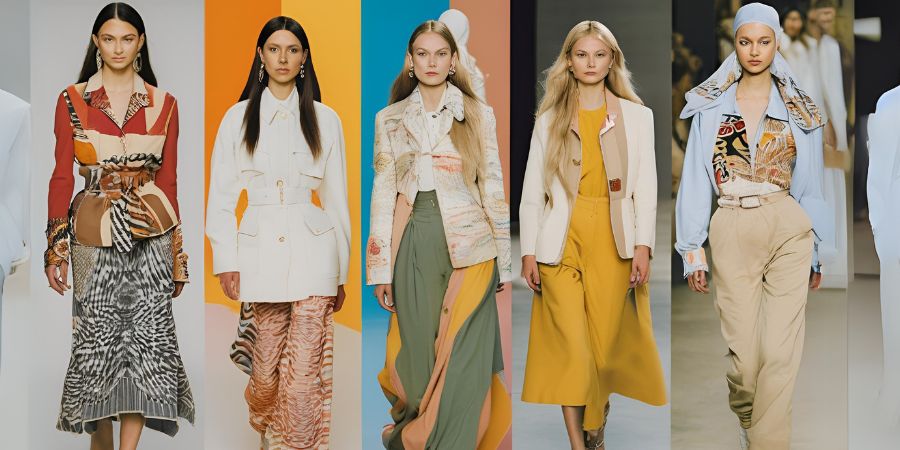Fashion designers are often regarded as the trendsetters of the industry, the masterminds who dictate what the world wears. But what do these creative geniuses choose for themselves? Let’s take a deep dive into the wardrobe choices of fashion designers and explore how their personal style reflects their artistry, practicality, and vision.
The Signature Style of Fashion Designers
Fashion designers are known for their distinctive style—a blend of creativity and practicality. While their personal wardrobes often reflect their design philosophy, they also consider comfort and functionality. Unlike celebrities who might be dressed head-to-toe in avant-garde couture, designers usually strike a balance between innovative trends and timeless classics.
Why Their Wardrobes Matter
Designers’ outfits are more than just clothing; they are a medium of self-expression and a reflection of their brand identity. A designer’s wardrobe often showcases their mastery in merging aesthetics with functionality. Whether they favor monochromatic looks or love to experiment with bold prints, their choices can inspire others and set trends.
Common Themes in Fashion Designers’ Outfits
1. Monochrome Magic
Many designers, from Karl Lagerfeld to Yohji Yamamoto, have been seen donning monochrome outfits. Black, in particular, is a favorite among designers because it’s versatile, chic, and timeless. It’s also a practical choice for long working hours in the studio, as it hides stains and marks from working with fabrics and dyes.
Why It Works:
- Black exudes sophistication and professionalism.
- It creates a clean canvas that doesn’t overshadow their creations.
2. Minimalist Chic
A significant number of designers opt for minimalism in their wardrobe. Clean lines, neutral tones, and subtle elegance define their style. This approach reflects their ability to create harmony between form and function, emphasizing quality over quantity.
Notable Designers:
- Phoebe Philo, known for her understated elegance.
- Giorgio Armani, a master of neutral palettes and simplicity.
3. Statement Accessories
While their clothing may lean towards simplicity, fashion designers often elevate their looks with bold accessories. Oversized sunglasses, unique jewelry, and signature footwear are staples. These items not only add personality to their outfits but also demonstrate their eye for detail.
Examples:
- Anna Wintour’s iconic sunglasses.
- Betsey Johnson’s quirky jewelry and footwear.
4. Practical Workwear
In the studio, designers prioritize comfort and practicality. Think of loose-fitting shirts, durable trousers, and comfortable footwear that allows them to move freely while working on patterns or sewing. Aprons or smocks are also common to protect their clothes during hands-on work.
Why It Matters:
- Practical clothing ensures ease of movement.
- It’s a functional choice for their demanding work environment.
5. A Mix of High and Low Fashion
Fashion designers are experts at blending high-end pieces with affordable staples. This mix-and-match approach reflects their ability to appreciate the artistry in both luxury and everyday fashion. For example, pairing a bespoke blazer with vintage jeans is a common look among designers.
The Appeal:
- Combines accessibility with luxury.
- Showcases their knack for creating balanced ensembles.
Influences on Designers’ Wardrobes
1. Cultural Heritage
Many designers draw inspiration from their roots. For instance, Stella McCartney’s sustainable wardrobe reflects her commitment to eco-friendly fashion, while designers like Prabal Gurung incorporate traditional patterns and textiles into their personal style.
2. Brand Identity
Designers often embody the ethos of their brand. For instance, Donatella Versace’s bold, glamorous wardrobe mirrors the opulence of the Versace label, while Ralph Lauren’s classic Americana style is reflected in his personal wardrobe.
3. The Nature of Their Work
A designer’s schedule, from attending runway shows to working long hours in the studio, influences their wardrobe. They often opt for versatile outfits that can transition seamlessly between work and social events.
Iconic Fashion Designers and Their Personal Style
1. Karl Lagerfeld
The late Karl Lagerfeld was synonymous with sharp tailoring, monochrome outfits, and statement accessories. His uniform—a black suit, white shirt, fingerless gloves, and dark sunglasses—became iconic and instantly recognizable.
2. Coco Chanel
Coco Chanel revolutionized women’s fashion with her emphasis on comfort and elegance. Her personal wardrobe often featured timeless pieces like tweed jackets, pearls, and the classic little black dress.
3. Vivienne Westwood
Vivienne Westwood’s punk-inspired wardrobe reflected her rebellious spirit and avant-garde designs. Bold prints, unconventional silhouettes, and dramatic accessories were her trademarks.
4. Tom Ford
Tom Ford’s personal style is the epitome of modern luxury. Tailored suits, crisp shirts, and polished shoes define his wardrobe, reflecting the sophistication of his brand.
5. Diane von Furstenberg
Known for her iconic wrap dresses, Diane von Furstenberg’s wardrobe reflects her feminine yet powerful design ethos. She often wears vibrant prints and flowing silhouettes.
Practical Tips to Emulate Designers’ Style
If you’re inspired by the way fashion designers dress, here are some practical tips to incorporate their style into your wardrobe:
1. Invest in Quality Basics
Build a foundation of versatile pieces like a tailored blazer, classic white shirt, and black trousers. These items can be dressed up or down and are timeless additions to any wardrobe.
2. Experiment with Accessories
Add personality to your outfits with statement accessories. Bold jewelry, a unique bag, or stylish sunglasses can elevate even the simplest ensemble.
3. Mix High and Low Fashion
Don’t shy away from pairing luxury items with affordable pieces. This approach allows you to create balanced and unique looks.
4. Prioritize Comfort and Functionality
Designers value clothing that is both stylish and practical. Choose pieces that allow ease of movement and reflect your lifestyle needs.
5. Stay True to Your Style
While it’s great to draw inspiration from designers, always stay authentic to your personal style. Confidence is key to pulling off any look.
Frequently Asked Questions
What would you wear as a fashion designer?
As a fashion designer, you would typically wear outfits that combine creativity with practicality. This could include monochromatic ensembles, tailored pieces, or comfortable workwear like loose-fitting shirts and durable trousers. Many designers also incorporate bold accessories to reflect their artistic flair.
What is the dress code for designers?
There is no strict dress code for designers, but their clothing often aligns with their brand’s ethos and personal style. Most designers favor versatile, functional outfits for studio work, and stylish, polished looks for events and meetings.
How to look like a fashion designer?
To look like a fashion designer, embrace creativity and individuality in your wardrobe. Invest in quality basics, experiment with statement accessories, and don’t shy away from mixing high-end and affordable pieces. Confidence in your style is key.
What is clothing in fashion design?
Clothing in fashion design refers to garments created by designers to reflect aesthetics, functionality, and innovation. It encompasses everything from casual wear to haute couture, with an emphasis on design elements like silhouette, fabric, and detailing.
Can I be a fashion designer if I can’t draw?
Yes, you can be a fashion designer even if you can’t draw. While sketching is a valuable skill, it’s not the only one required. Many designers use digital tools, collaborate with illustrators, or communicate their ideas through mood boards and fabric samples.
How to look like a fashion girl?
To look like a fashion girl, stay updated on trends and incorporate them into your wardrobe in a way that suits your personality. Mix textures, play with colors, and accessorize thoughtfully. Confidence and a polished presentation are essential to mastering this look.
Conclusion
What fashion designers wear is a fascinating blend of creativity, practicality, and personal expression. Their wardrobes often reflect their design philosophy and serve as an extension of their artistry. Whether it’s monochrome ensembles, bold accessories, or minimalist chic, fashion designers’ outfits are a testament to their impeccable taste and innovative spirit. By understanding their approach to style, we can draw inspiration to elevate our own wardrobes and embrace fashion as a form of self-expression.


